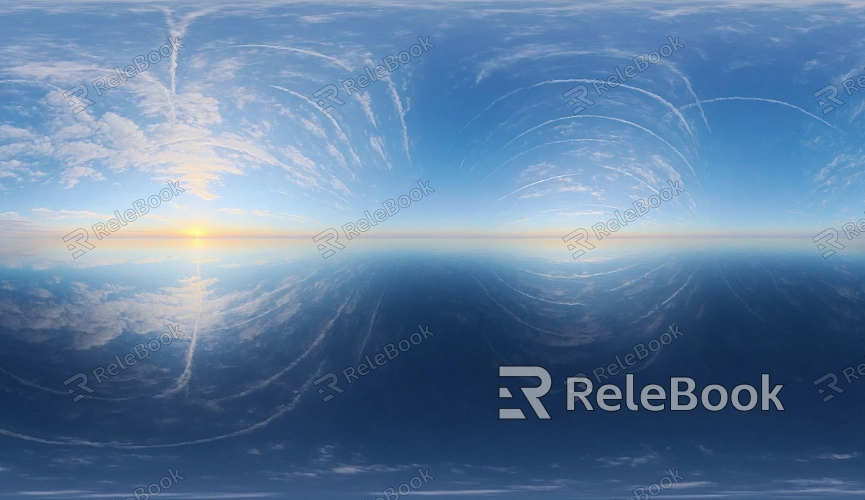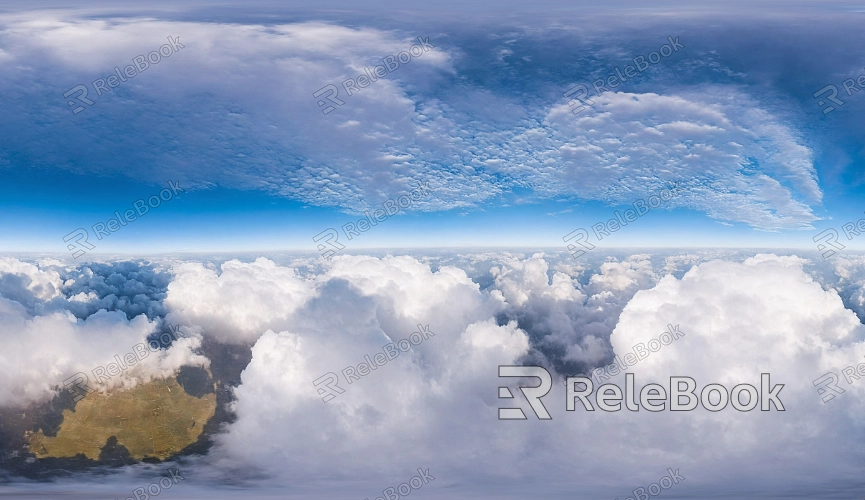How to Convert Regular Skybox Textures to HDR
In game environments, animation production, or architectural visualization projects, skybox textures are commonly used to create realistic background environments. However, regular skybox textures, due to their limited dynamic range, struggle to reflect the subtle changes in lighting, whereas HDR textures can capture more light details, significantly enhancing overall rendering quality. As a result, converting regular skybox textures into HDR files has become increasingly important. This technique is widely used in major 3D software such as 3ds Max, Blender, and Cinema 4D, allowing designers to achieve more natural lighting transitions. In this article, we will explore various methods for converting regular skybox textures to HDR, helping designers improve the quality of their work.

1. Understanding the Difference Between Regular and HDR Textures
Before converting regular skybox textures, it’s crucial to understand the key differences between them.
Limited dynamic range of regular textures: Standard 8-bit skybox textures can only display up to 256 levels of gray per channel, which limits the representation of brightness and darkness, resulting in less detailed highlights and shadows.
Higher dynamic range of HDR textures: HDR textures typically use 32-bit floating-point storage, capturing a broader range of brightness levels, which provides a more natural look when rendering lighting changes.
Understanding these differences helps designers choose the right tools and methods for conversion during their workflow.
2. Using HDR Software Tools for Conversion
Selecting the right software tools is essential when converting regular skybox textures to HDR. Many image editing and 3D software programs support the creation and editing of HDR files.
Photoshop: As a mainstream image-editing software, Photoshop allows designers to edit and convert HDR files through its extended features. You can import a regular skybox texture, adjust its brightness curves, contrast, and other parameters, then export it as an HDR file.
HDRShop: A tool specifically designed for HDR processing, HDRShop enables you to merge multiple exposures into a single HDR image. By simulating high dynamic range effects with varying exposure settings, designers can generate HDR textures.
These tools help designers convert regular skybox textures to HDR without sacrificing image quality.
3. Adjusting Exposure for HDR Effects
Adjusting exposure is one of the key steps in generating HDR effects during conversion.
Multi-exposure merging: By combining multiple images of the same skybox texture at different exposure levels, designers can create an HDR image that contains a more comprehensive range of lighting information.
Manual brightness adjustments: Sometimes, a single skybox texture can be manually adjusted by tweaking its brightness curve and contrast to mimic an HDR effect. While this method may not be as effective as multi-exposure merging, it can still enhance the visual quality.
Careful exposure adjustments enable designers to create more realistic lighting effects for their scenes.
4. Applying HDR in Rendering Engine Settings
After converting the regular skybox texture to HDR, the next step is correctly configuring the rendering settings in your 3D software.
3ds Max: When using the VRay renderer, designers can load the HDR skybox texture in the environment map settings and adjust the rendering parameters to improve lighting quality.

Blender: In Blender’s Cycles rendering engine, HDR textures can be used to create realistic global illumination. After importing the HDR file in the “Environment Lighting” settings, the lighting transitions in the entire scene will become more natural.
By effectively applying HDR textures, designers can achieve superior visual results across different rendering engines.
5. Calibrating Colors and Lighting for Optimization
Because HDR images have a higher brightness and contrast range, color and lighting calibration may be required during rendering.
Color correction tools: Most 3D software provides color correction tools to help designers adjust the hue and saturation of HDR skybox textures based on the needs of the scene.
Lighting intensity adjustments: Since HDR files have higher brightness, they may overwhelm other light sources in the scene. Designers can lower the light intensity to ensure a balanced distribution of lighting and shadows.
These calibration steps ensure that HDR skybox textures seamlessly blend into the 3D environment.
6. Creating Custom HDR Skyboxes
Besides converting regular skybox textures to HDR, designers can also create custom HDR skyboxes through photography or procedural generation.
Photography: By taking multiple exposures of the sky and merging them in HDR software, designers can create highly realistic HDR skyboxes.
Procedural generation: Some 3D software supports parametric generation of HDR skyboxes, allowing designers to customize the sky’s lighting, cloud distribution, and other details according to their needs.
This approach provides personalized HDR content that can further enhance the visual quality of projects.
7. Using HDR Skyboxes in Game Engines
HDR skyboxes are not only useful in 3D software but are also widely applied in various game engines.
Unreal Engine: By loading an HDR skybox, game designers can create realistic global lighting and reflection effects, adding a more immersive feel to game environments.
Unity: Similarly, Unity supports HDR textures, allowing designers to simulate realistic lighting changes in their scenes, thereby improving the level of detail.
In these applications, HDR skyboxes significantly enhance the overall visual experience.
Converting regular skybox textures to HDR is a complex yet valuable technique that can dramatically improve the lighting effects in 3D environments. If you're looking for high-quality HDR images, 3D textures, SketchUp models, or 3ds Max models to create impressive models and virtual scenes, Relebook offers a wide range of resources to help you achieve exceptional visual results.

